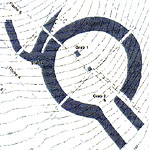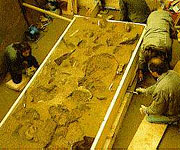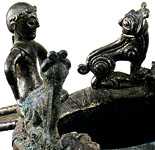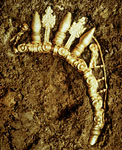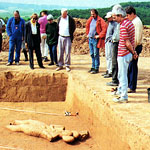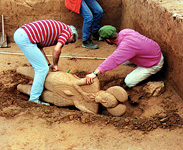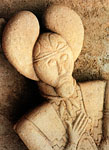I. Site
II. Tomb
III. Statue
Glauberg (Hessen), Germany
The Glauberg is a hill located ca. 32 km to the north-east of Frankfurt at Glauburg. The hilltop was fortified in antiquity. A circular trench ca. 70m in Dia around a large tumulus of ca. 50 m Dia was discovered from the air in 1987 and is currently being excavated. Leading to the tumulus from the SE was a road or "processional way" ca. 350 m long, 10 m wide. The excavation is visible to the right (south) of the wooded hill.
after Herrmann 1997, 7
after Herrmann 1997, 7


